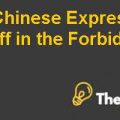
Introduction
Wal-Mart’s business model has been examined in terms of its potential success for entry into emerging markets. The company’s supply chain management and its strengths as a retailer for strategic manufacturers have been examined alone with drawbacks that the company has in its supply chain network. Following sections look into the internal and external environment of Wal-Mart in depth to highlight the company’s position in each of the markets where it operates with its massive network of discount stores and sully chain.
External Analysis
Porter’s Five Forces Analysis for Global Discount Retailing Industry
Rivalry in the discount retailing industry will be studied under Michael Porter’s ‘five forces analysis’ (Peter Stimpson, 2008) to highlight the strength of each of the industry forces respectively. Considering the fact that global discount retailers such as Carrefour, Ahold, Metro, Tesco and Wal-Mart have already taken over a significant share of the global retail business, it can be said that the global discounting industry is highly competitive. These global discount retailers not only enjoy economies of scale but also have sophisticated information systems with optimized supply chains that help them in cutting a lot of excess costs from the system and pass them on to the end customer. This indicates that the rivalry in the industry is not on the basis of price only but is done via factors like convenience and merchandize mix.
With each of these major retailers having spread their network internationally, the competitive rivalry is not just limited to national boundaries. Threat of new entrants in the global discount retailing is low if the entry of a completely new player is considered. This is because the large discount retailing chains have not only limited their networks to developed nations but are also ready to avail the potential that emerging markets like Hungary, Turkey, Brazil, Argentina and India have to offer especially as many of the emerging markets have a wave of de-regulation. However, threat of new entrants may be there to some extent given the fact that upstart chains like Dollar General with comparable low prices offer personalized experience to customers in contrast to the impersonal shopping experience that large discount retailers offer have emerged with in the competitive environment.
With each of these retailers enjoying economies of scale in purchasing, negotiating favorable contracts with manufacturers and enjoying dominance in terms of offering shelf space, the bargaining power of the supplier is low in comparison to the bargaining power of the buyer. In addition to this, discount retailers like Wal-Mart have started offering direct competition to suppliers by introducing their own labels and selling them alongside famous brands like Procter & Gamble (P&G) and Kraft. With approximately 30,000 suppliers looking towards these giant retailers, the bargaining power of suppliers is low in this industry as these retail giants are needed by these suppliers for sales volume much more than these retailers need them.
The fact that buyers have the option of choosing from amongst various brands sold by these discount retailers in addition to having choices in terms of retailers’ own brands suggests that the buyer in the discount retailing industry enjoys a high bargaining power.
Considering the fact that global discount retailers offer their own brands in addition to branded products from suppliers, it can be said that the threat of substitutes in terms of products’ availability is high in the global discount retailing industry. As far as the threat of substitutes in the form of retailers that can compete with these global retailers is concerned, local and national retail chains that operate in emerging or developed nations may offer the same type of merchandize that each of these global retailers carry. However, the discounted price and convenience of shopping provided by these retailers may lower the threat of substitutes in each region where they operate. The summary of this analysis can be seen in appendix 2.
Internal Analysis
SWOT Analysis
Appendix 1 shows the SWOT analysis for Wal-Mart highlighting the group’s strengths, weaknesses, opportunities and threats...............................
This is just a sample partial case solution. Please place the order on the website to order your own originally done case solution.
Facilitates discussion of sources Wal-Mart Stores "competitive advantage in discount retailing, and the future sustainability of this advantage. Also profiles major step to diversify the company in early 1980." Hide
by Pankaj Ghemawat Source: Harvard Business School 12 pages. Publication Date: August 19, 1986. Prod. #: 387018-PDF-ENG













